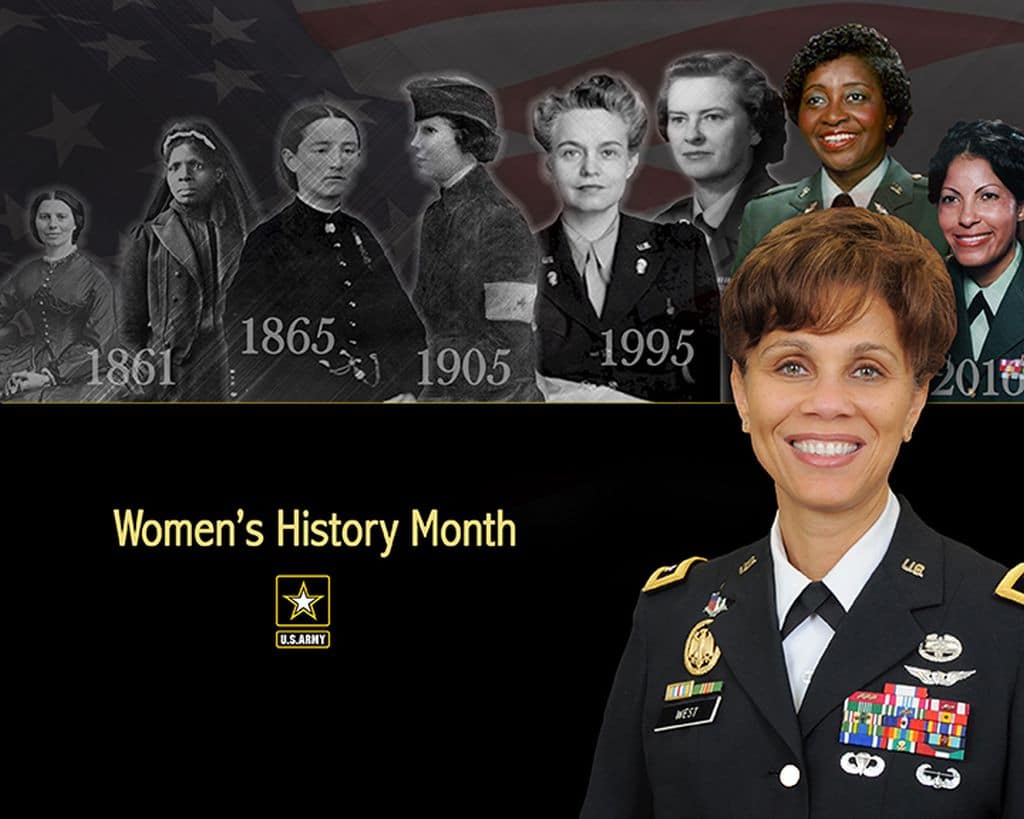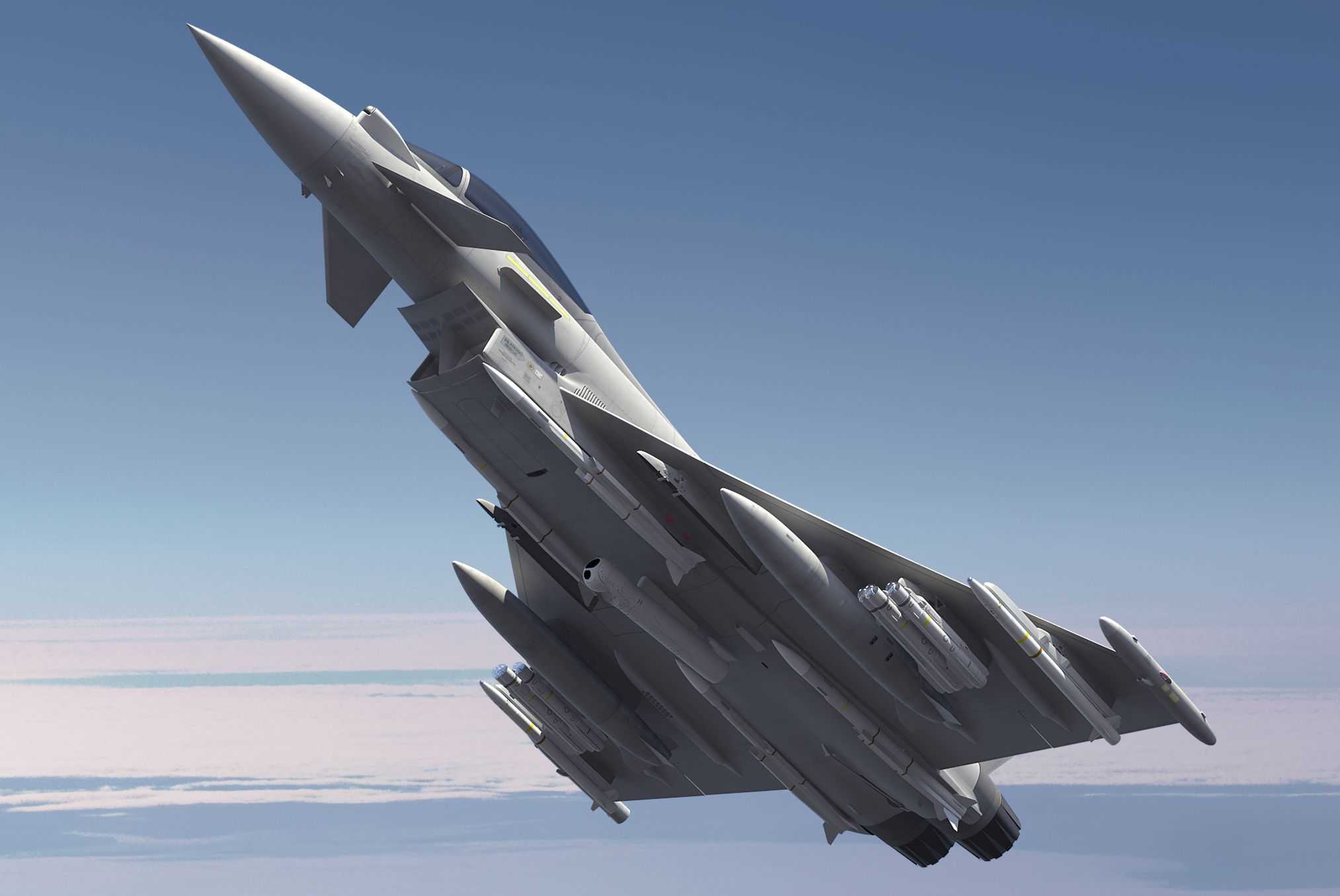Women have played a vital role in forming the U.S. Army since 1775. From Molly Pitcher to those now serving, their accomplishments have shaped not just the Army, but the country.
Recent strides toward full integration include the first women graduating from Ranger School, the first women reporting for infantry and armor training, and the opening of all military occupational specialties to women.
“Women have served in the defense of this land for years before our United States was born,” said retired Gen. Gordon R. Sullivan, chief of staff of the Army from 1991 to 1995. “They have contributed their talents, skills and courage to this endeavor for more than two centuries with an astounding record of achievement that stretches from Lexington and Concord to the Persian Gulf and beyond.”
The following 14 pioneers in female integration are just a sampling of the many women who have contributed to shaping the U.S. Army.
Mary Ludwig Hays McCauley
Revolutionary War
(1775 – 1783)
Mary Ludwig McCauley gained the nickname of “Molly Pitcher” in 1778 by carrying water to the men on the Revolutionary battlefield in Monmouth, New Jersey. She replaced her husband, Capt. John Hays, when he collapsed at his cannon. Since then, many women who carried water to men on the battlefield were called “Molly Pitchers.”
Clara Barton
Civil War nurse
(1861 – 1865)
Clara Barton witnessed immense suffering on the Civil War battlefield and did much to alleviate it. She was on the scene ministering to those most in need, taking care of the wounded, dead, and dying.
Barton became a “professional angel” after the war. She lectured and worked on humanitarian causes relentlessly and went on to become the first president of the American Association of the Red Cross. At the age of 77, she was still in the field taking care of Soldiers in military hospitals in Cuba during the Spanish-American War.
Susie King Taylor
Civil War
(1861-1865)
Born a slave in Georgia in 1848, Susie Baker, who later became known as Susie King Taylor, gained her freedom in April 1862. Baker was initially appointed laundress of the 33rd U.S. Colored Troops, re-organized from the 1st South Carolina Volunteers. Due to her nursing skills and her ability to read and write, her responsibilities with the regiment began to multiply. More than a few African-American women may have provided service as the Union Army began forming regiments of all black men. After the war, Taylor helped to organize a branch of the Women’s Relief Corps.
Dr. Mary Walker
Union Army contract surgeon
(1861-1865)
Dr. Mary Walker graduated from Syracuse Medical College in 1855 and later earned a second degree in 1862 from Hygeia Therapeutic College in New York. During the Civil War, she worked at first as a volunteer in Manassas and Fredericksburg, Virginia. Later she worked as a contract physician for the 52nd Ohio Infantry Regiment. Walker is the only woman ever granted the Medal of Honor.
Mary Catherine O’Rourke
Telephone operator and interpreter
(1917-1918)
Mary Catherine O’ Rourke was one of 450 “Hello Girls” who served in the Signal Corps Female Telephone Operators Unit during World War I. They were bilingual female switchboard operators recruited by Gen. John J. Pershing to improve communications on the Western Front.
The Signal Corps women were given the same status as nurses, and had 10 extra regulations placed on them to preserve their “status as women.” They had the rank of lieutenant but had to buy their own uniforms.
Mary Catherine O’Rourke was in the fourth group of these women who shipped off to France during World War I. She studied French with instructors from the University of Grenoble. She was assigned to Paris and served as interpreter for Gen. John J. Pershing during months of negotiations at the Paris Peace Conference which resulted in the Treaty of Versailles.
Col. Oveta Culp Hobby
First WAC director
(1942-1945)
Col. Oveta Culp Hobby was called upon to serve as the chief, Women’s Interest Section, Bureau of Public Affairs for the War Department. She served in this position for one year before becoming the first woman sworn into the Women’s Army Auxiliary Corps, or WAAC in 1942 and appointed as its director. The WAAC was converted to the Women’s Army Corps in July 1943 and Hobby was appointed to the rank of colonel in the Army of the United States as she continued to serve as director of the WAC.
After setting the stage for the creation of the WAC, Hobby built the corps to the strength of over 100,000 by April 1944. She established procedures and policies for recruitment, training, administration, discipline, assignment, and discharge for the WAC. She surmounted difficulties in arranging for the training, clothing, assignments, recognition, and acceptance of women in the Army. Hobby made it possible for women to serve in over 400 non-combat military jobs at posts throughout the United States, and in every overseas theater.
Hobby was later called upon by President Dwight D. Eisenhower to serve as the first secretary of the Department of Health, Education and Welfare from 1953 to 1955.
Col. Bettie J. Morden
WAC deputy director, 1971
Bettie J. Morden had a long, distinguished career in the Army that took many turns. She enlisted in the WAAC on Oct. 14, 1942. She receiving basic and administrative training at the First WAAC Training Center, Fort Des Moines, Iowa. She served throughout World War II at the Third WAAC Training Center, Fort Oglethorpe, Georgia, as an administrative noncommissioned officer of the Publications Office. Morden later served as a first sergeant with Headquarters Company on the South Post. After the war ended, Morden was discharged in November 1945.
In September 1949, she entered the WAC, U.S. Army Reserve, and was commissioned a second lieutenant in February 1950. In November 1966, she was assigned as executive officer, Office of the Director, WAC, at the Pentagon and was promoted to full colonel on June 9, 1970. She assumed the position of acting deputy director, WAC, on Feb 1, 1971. She retired on Dec. 31, 1972, and was awarded the Distinguished Service Medal.
In July 1973, Morden was elected president of the WAC Foundation, now the U.S. Army Women’s Museum Foundation, a private organization formed initially in 1969 to support the museum. Morden resigned from the presidency in June 2001.
Jacqueline Cochran
Pioneer female aviator
(Pre-World War II to 1970)
After developing a successful line of cosmetics, Jacqueline Cochran took flying lesson in the 1930s so that she could use her travel and sales time more efficiently. She eventually became a test pilot. She helped design the first oxygen mask and became the first person to fly above 20,000 feet wearing one. She set three speed records and a world altitude record of 33,000 feet — all before 1940.
She was the first woman to fly a heavy bomber over the Atlantic. She volunteered for duty as a combat pilot in the European Theater during World War II, but her offer was rejected. She trained American women as transport pilots in England for the Air Transport Auxiliary of the Royal Air Force.
Upon return to the United States, she oversaw flight training for women and the merging of the Women’s Auxiliary Ferrying Squadron into the Women’s Airforce Service Pilots in July 1943. She was awarded the Distinguished Service Medal in 1945 for her service in World War II.
After the war, she was commissioned in 1948. She became the first woman to break the sound barrier in an F-86 Sabre Jet in 1953 and went on to set a world speed record of 1,429 mph in 1964. She retired from the Air Force Reserve as a colonel in 1970.
Brig. Gen. Clara L. Adams-Ender
Army Nurse Corps
(1961-1993)
In 1967, Brig. Gen. Adams-Ender became the first female in the Army to qualify for and be awarded the Expert Field Medical Badge. She was also the first woman to earn a master’s of military arts and science degree .at the U.S. Army Command and General Staff College in Fort Leavenworth, Kansas.
On Sept. 1, 1987, she was promoted to brigadier general and appointed the chief of the Army Nurse Corps.
In 1991, she was selected to be commanding general of Fort Belvoir, Virginia, and served in this capacity as well as that of deputy commanding general of the U.S. Military District of Washington until her retirement in 1993.
Command Sgt. Maj. Yzetta L. Nelson
First woman command sergeant major
(1944-1970)
Yzetta L. Nelson joined the Women’s Army Corps in 1944. In 1966, she was promoted to the rank of sergeant major. On March 30, 1968, she became the first WAC promoted to the new rank of command sergeant major. She continued to serve in the WAC until her retirement in 1970.
Brig. Gen. Sherian G. Cadoria
First African-American female general
(1961-1990)
Promoted to brigadier general in 1985, Sherian G. Cadoria was the highest-ranking black woman in the Army until she retired in 1990. She entered the Army in 1961, with a direct commission as a first lieutenant in the Women’s Army Corps. In the 1970s, she transferred to the Military Police Corps.
Sgt. Danyell E. Wilson
First African-American female sentinel at Tomb of Unknowns
Sgt. Danyell E. Wilson became the first African-American woman to earn the prestigious Tomb Guard Badge and become a sentinel at the Tomb of the Unknowns, Jan. 22, 1997.
Born in 1974 in Montgomery, Alabama, Wilson joined the Army in February 1993. She was a military police officer assigned to the MP Company, 3rd U.S. Infantry Regiment (The Old Guard). She completed testing and a rigorous eight-month trial period and became part of the Honor Guard Company of The Old Guard.
Sgt. Maj. Michele S. Jones
First command sergeant major of Army Reserve
In September 2003, Sgt. Maj. Michele S. Jones was selected by Lt. Gen. James R. Helmly, Army Reserve chief, to become the ninth command sergeant major of the Army Reserve. She was the first woman to serve in that position and the first to be chosen as the senior NCO in any of the Army’s components. For some time, she was also the highest-ranking African-American in any of the military services.
Jones entered the Army in 1982. She attended basic training at Fort Jackson, South Carolina, and advanced individual training at Fort Benjamin Harrison, Indiana. She was the first woman to serve as class president at the United States Sergeants Major Academy.
Lt. Gen. Nadja West
Surgeon general of the U.S. Army
Lt. Gen. Nadja Y. West is the 44th surgeon general of the United States Army and commanding general, U.S. Army Medical Command.
West is a graduate of the United States Military Academy with a bachelor of science in engineering. She earned a doctorate of medicine from George Washington University School of Medicine in the District of Columbia.
Her last assignment was as the Joint Staff surgeon at the Pentagon. In that capacity, she served as the chief medical advisor to the chairman of the Joint Chiefs of Staff and coordinated all health services issues to include operational medicine, force health protection, and readiness.











